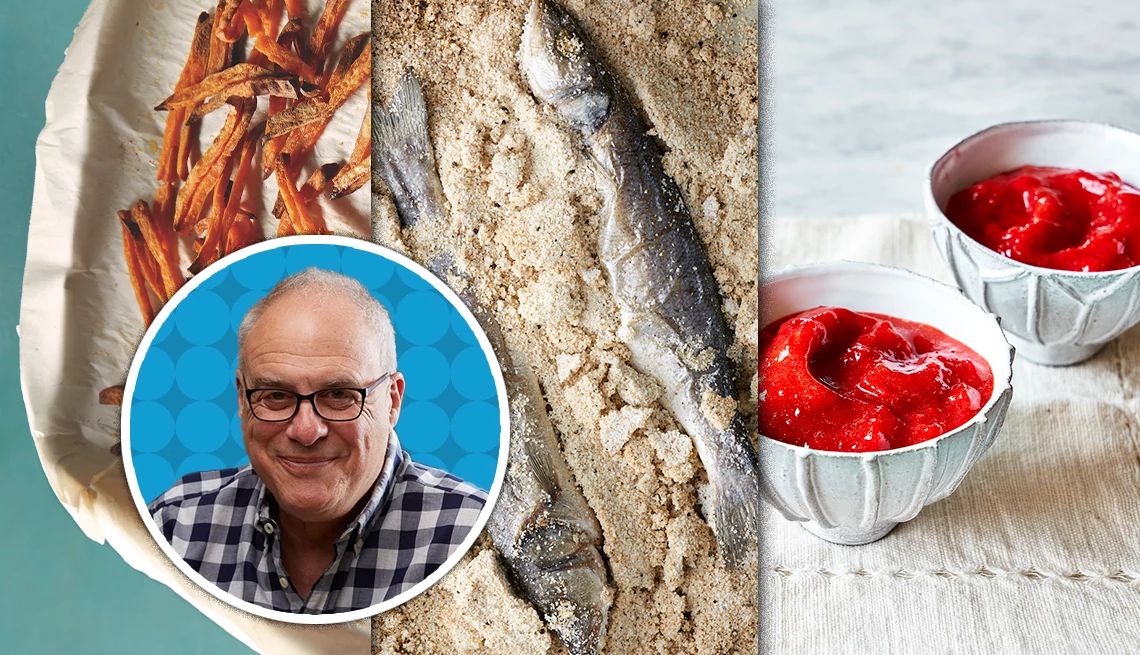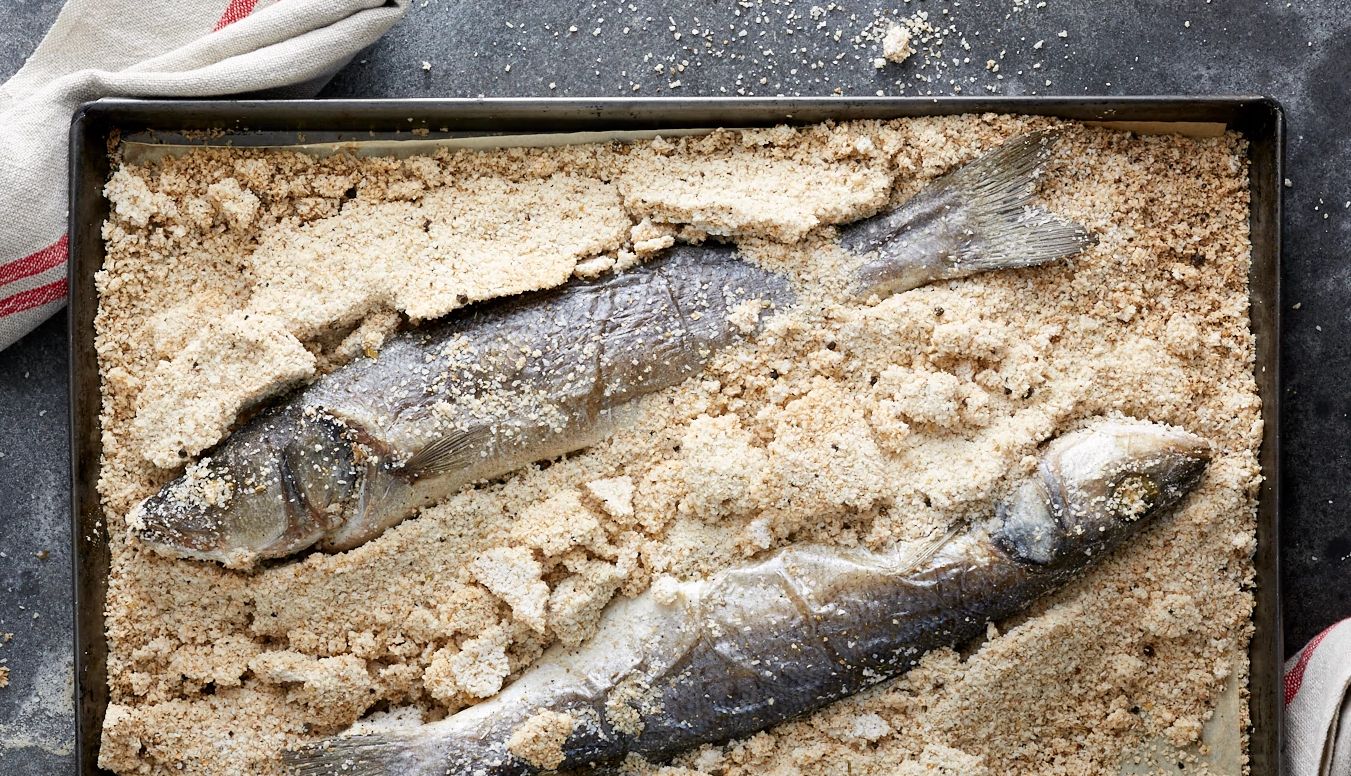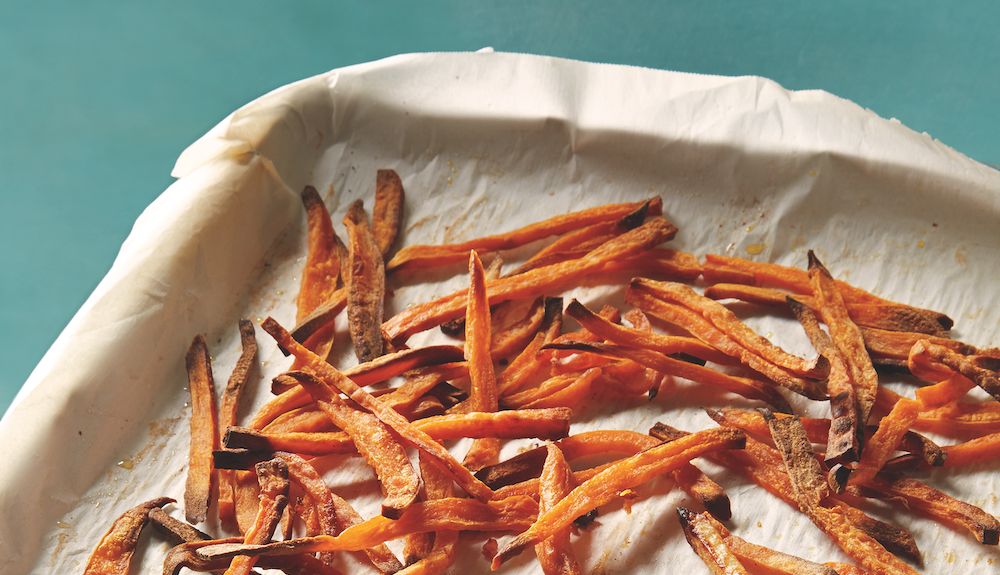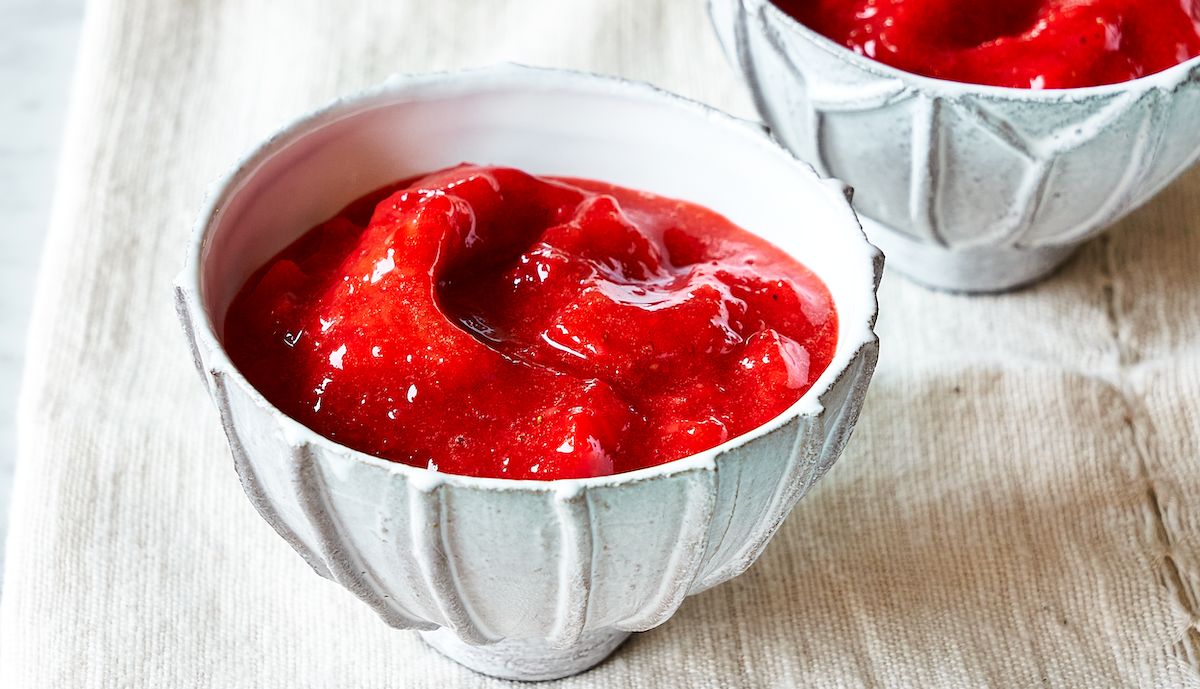AARP Hearing Center


Jump to recipes
Salt-Baked Whole Fish With Aioli • Oven-Roasted Sweet Potato Fries • Fruit Slush
In many ways, fish and chips is the ideal dish. It incorporates so many good things — an excellent piece of protein (flaky white fish, well-sourced, is hard to beat), a super crisp outer “shell,” just the right amount of salt to make your taste buds sing, and a tangy sauce.
Of course, deep-fried food isn’t perfect. It’s certainly not something you should be consuming every day, and when doing it at home, it can be intimidating. There are ways, though, to get some of those deep-fried qualities — the crust, the salt, the oceanic vibe — at home, without the mess, without so much oil.
The old technique of wrapping food and a little liquid in a package, called en papillote, is still a valuable one, especially with some modern tweaks. My Salt-Baked Fish is a classic cooking-under-wraps preparation, only instead of seasoning the fish, I aggressively season the crust. Once it’s done, you serve it with aioli and sweet potato homefries, and you’ll have your own home-cooked version of the British standby.
Once you’re done, a fruity dessert will be much needed to cap off the meal, and the fruit slush we’re presenting you with today really could not be easier (and I’m pleased to say that it fits in nicely with a theme that is decidedly seaside). And, of course, each of the three easy recipes is perfect for two. Enjoy!
Salt-Baked Whole Fish with Aioli


Time: About one hour
This recipe is a take on cooking-under-wraps, only instead of seasoning whole fish before sealing it in paper, I aggressively season a salt crust used to seal and steam the fish, which in turn gently infuses it with flavor and cooks it perfectly.
Ingredients
- 2 bay leaves, broken into pieces
- 1 tablespoon black peppercorns
- 1 tablespoon fennel seeds
- 2 teaspoons coriander seeds
- 1 tablespoon brown mustard seeds
- 2½ cups (about 1½ pounds) kosher salt
- 1 egg white, beaten or whisked until foamy
- About 1 pound whole white fish (usually 1 medium fish, like trout or bass) scaled and gutted, with head on
- Lemon wedges
- 1 recipe Aioli (recipe follows), for serving




































































You Might Also Like
Diane Morrisey's Sheet Pan Jambalaya Recipe
A twist on a Creole meal from ‘You Got This! Recipes Anyone Can Make and Everyone Will Love’ by Diane Morrisey
Make This: Magnolia Bakery’s Famous Banana Pudding Recipe
Save us a serving of this classic, popular dessert
5 Easy Dinners in 35 Minutes Or Less
Short on time? No problem — these recipes come together fast